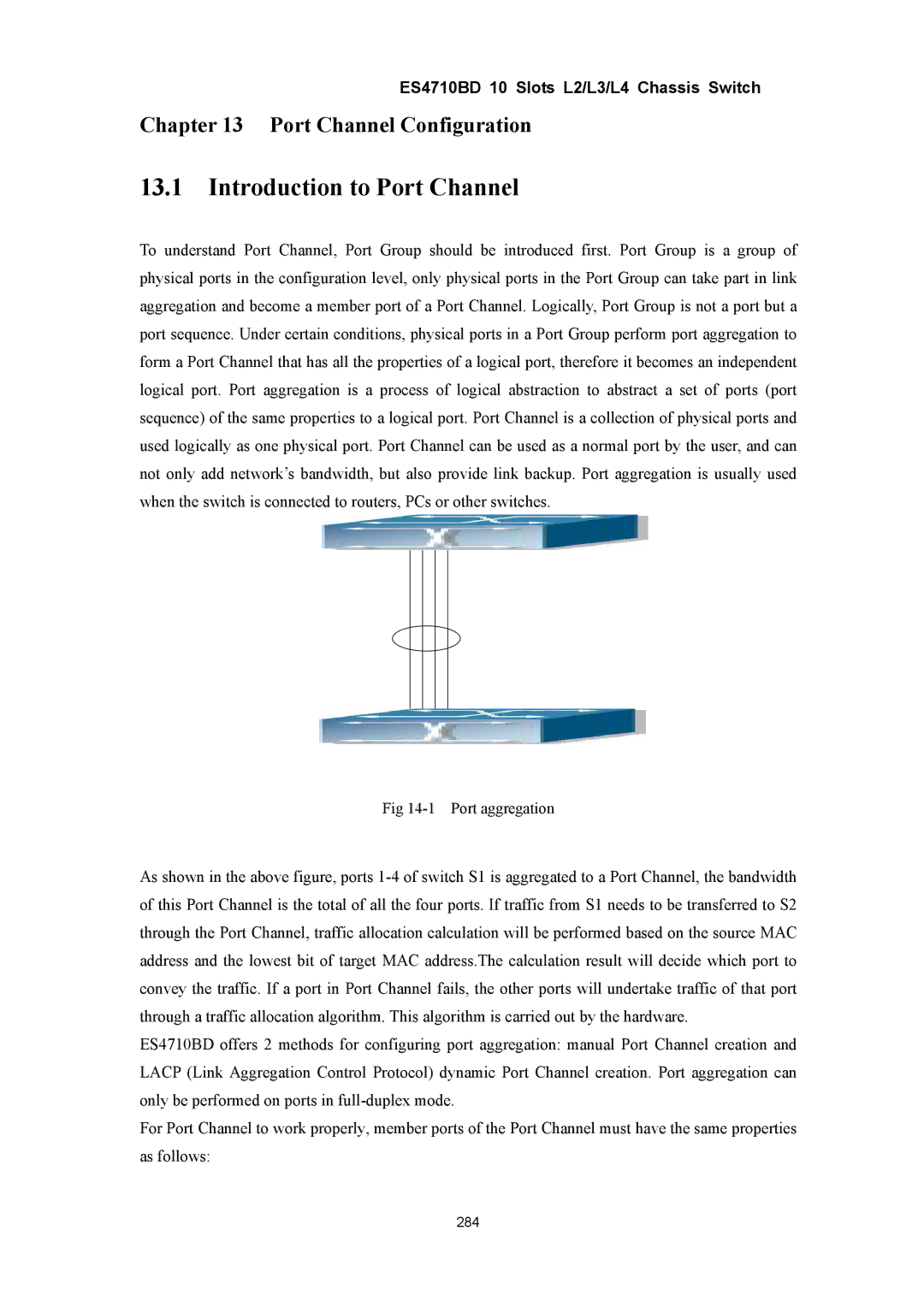
ES4710BD 10 Slots L2/L3/L4 Chassis Switch
Chapter 13 Port Channel Configuration
13.1Introduction to Port Channel
To understand Port Channel, Port Group should be introduced first. Port Group is a group of physical ports in the configuration level, only physical ports in the Port Group can take part in link aggregation and become a member port of a Port Channel. Logically, Port Group is not a port but a port sequence. Under certain conditions, physical ports in a Port Group perform port aggregation to form a Port Channel that has all the properties of a logical port, therefore it becomes an independent logical port. Port aggregation is a process of logical abstraction to abstract a set of ports (port sequence) of the same properties to a logical port. Port Channel is a collection of physical ports and used logically as one physical port. Port Channel can be used as a normal port by the user, and can not only add network’s bandwidth, but also provide link backup. Port aggregation is usually used when the switch is connected to routers, PCs or other switches.
Fig
As shown in the above figure, ports
ES4710BD offers 2 methods for configuring port aggregation: manual Port Channel creation and LACP (Link Aggregation Control Protocol) dynamic Port Channel creation. Port aggregation can only be performed on ports in
For Port Channel to work properly, member ports of the Port Channel must have the same properties as follows:
284
